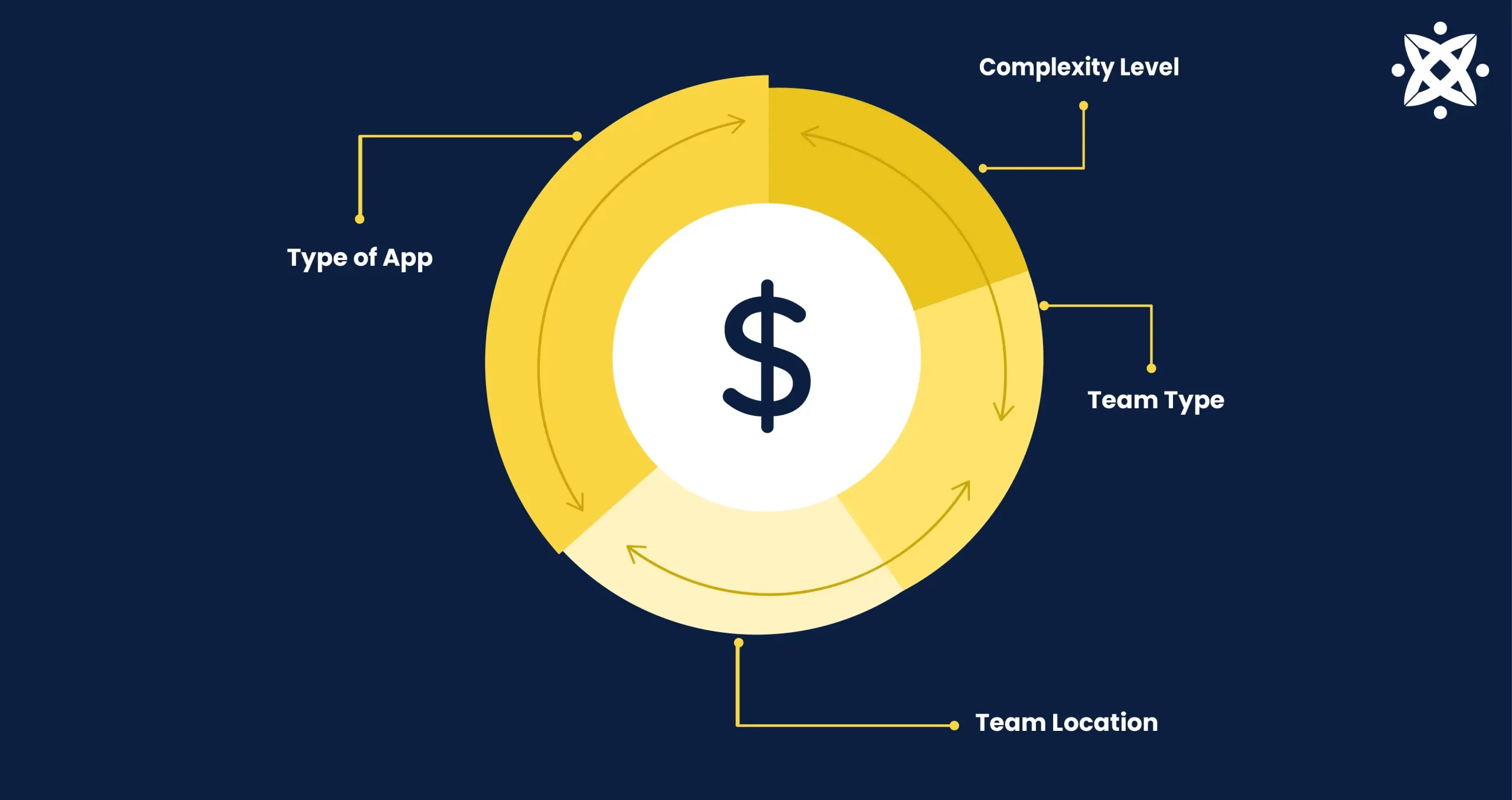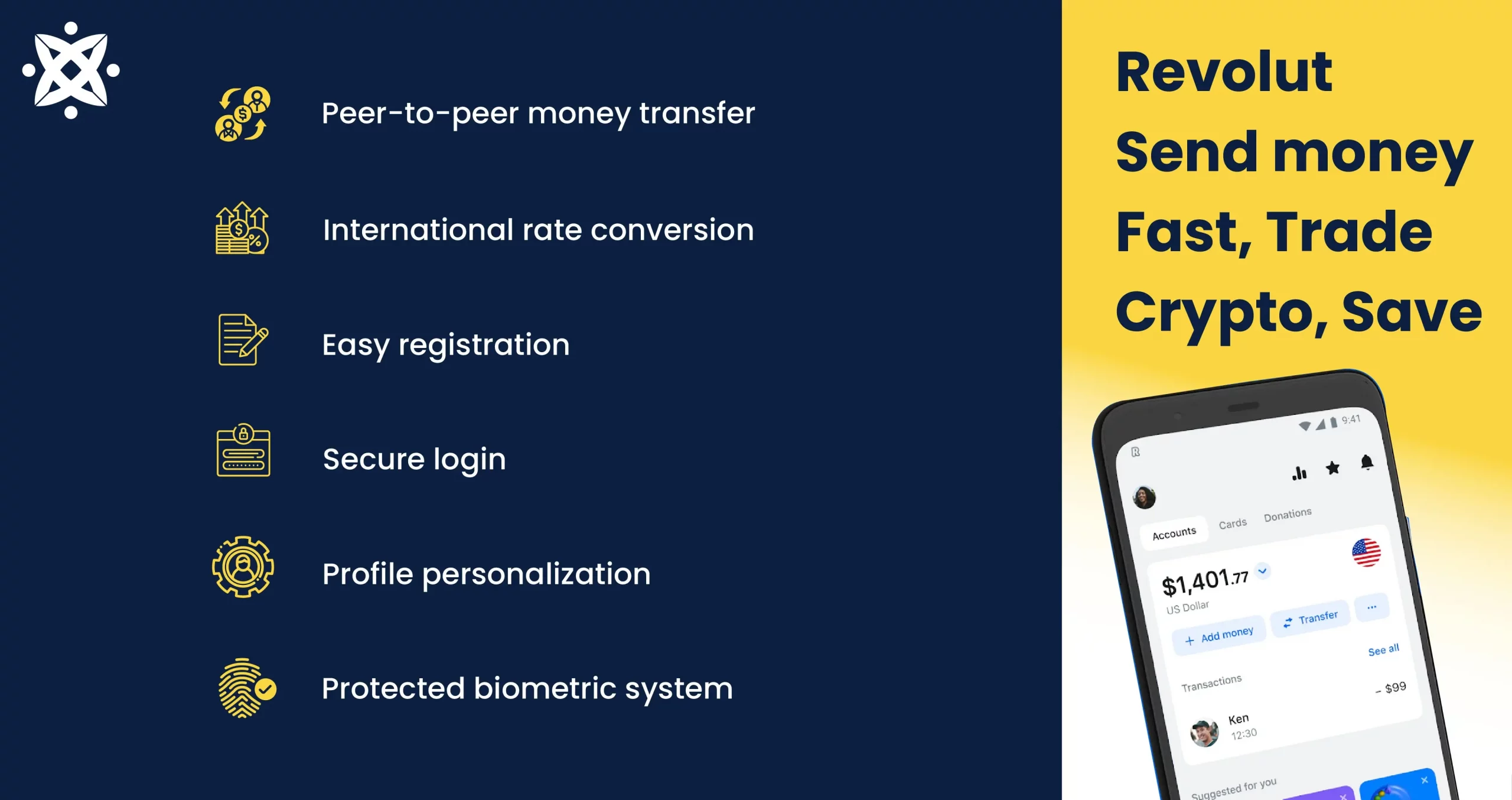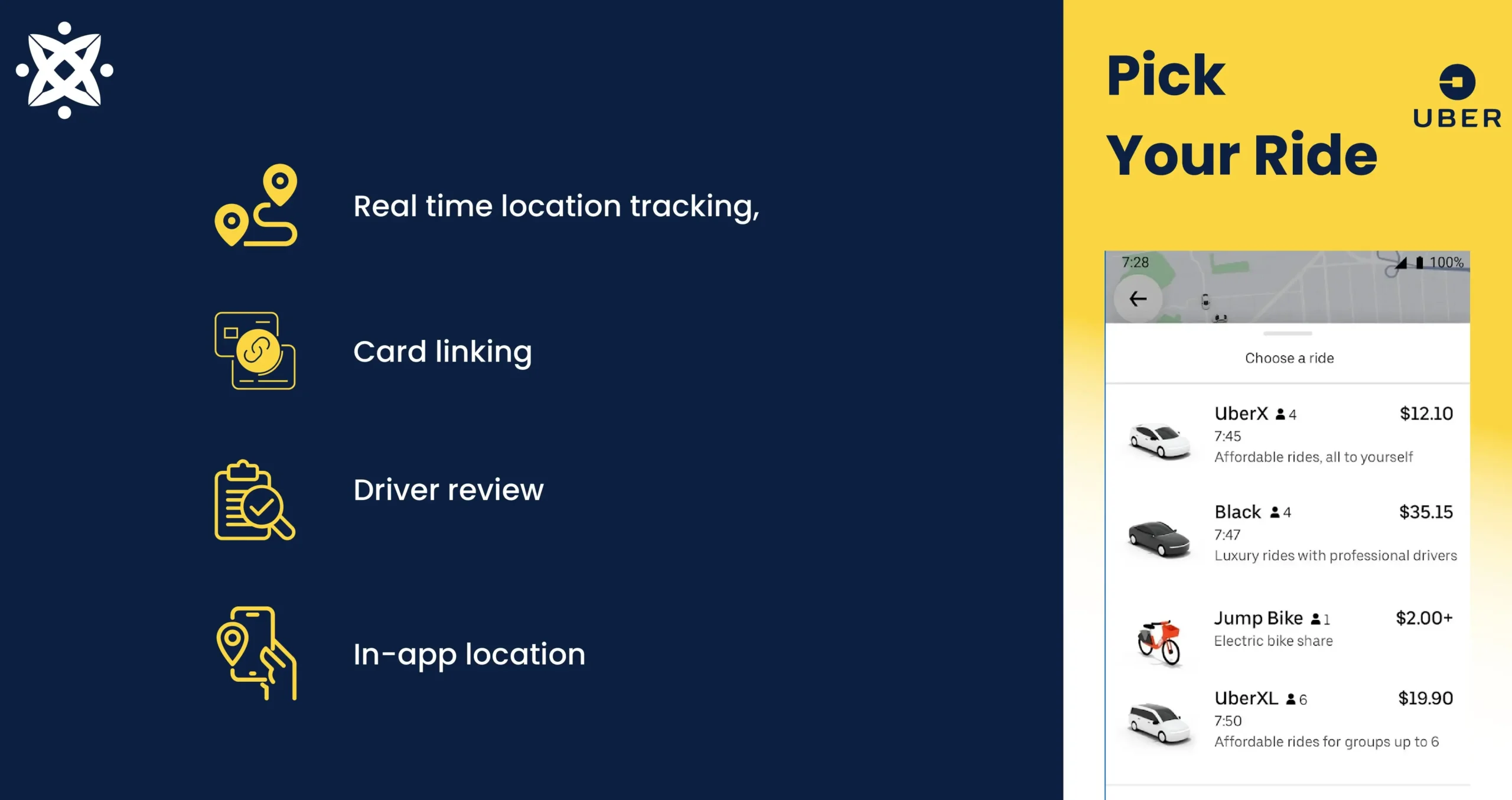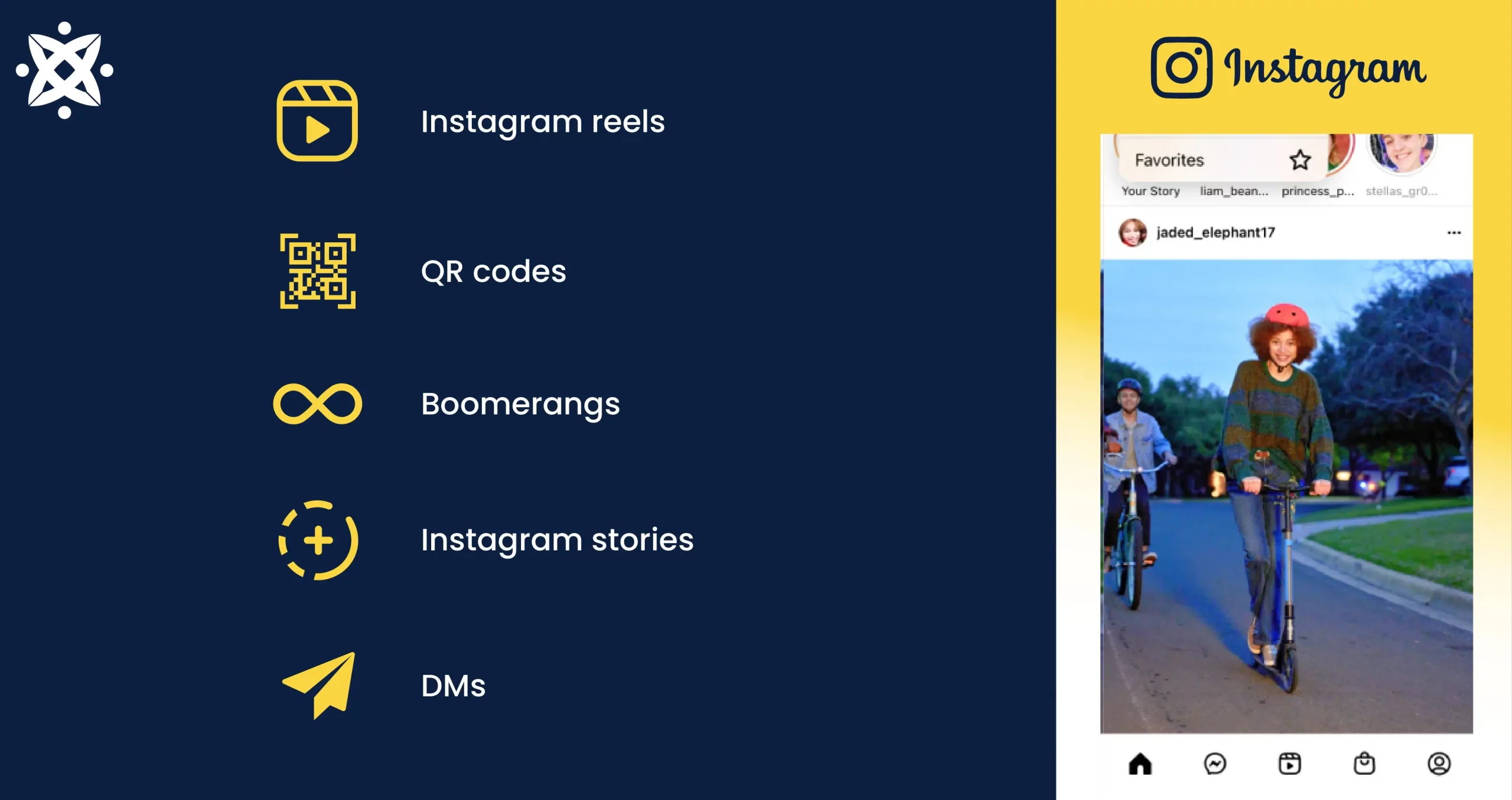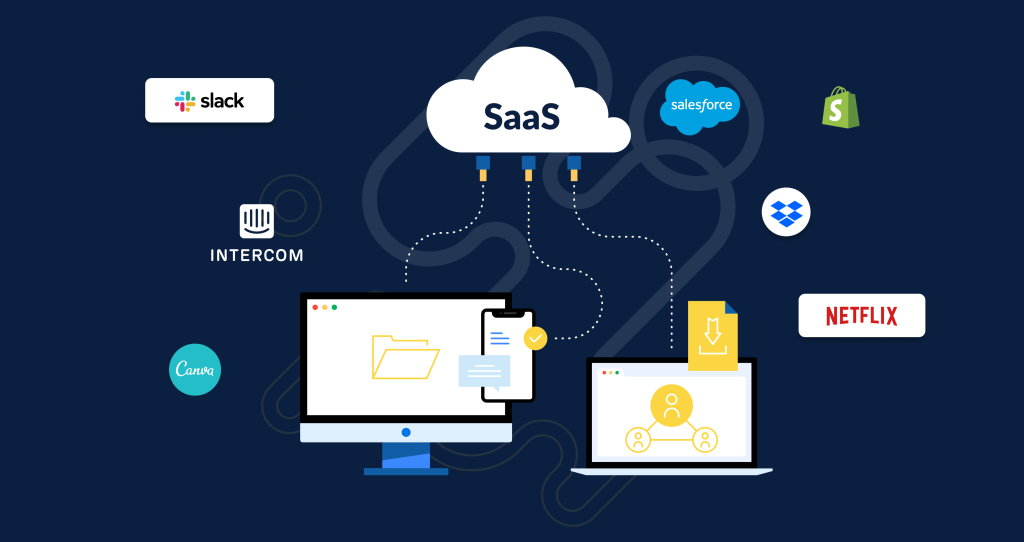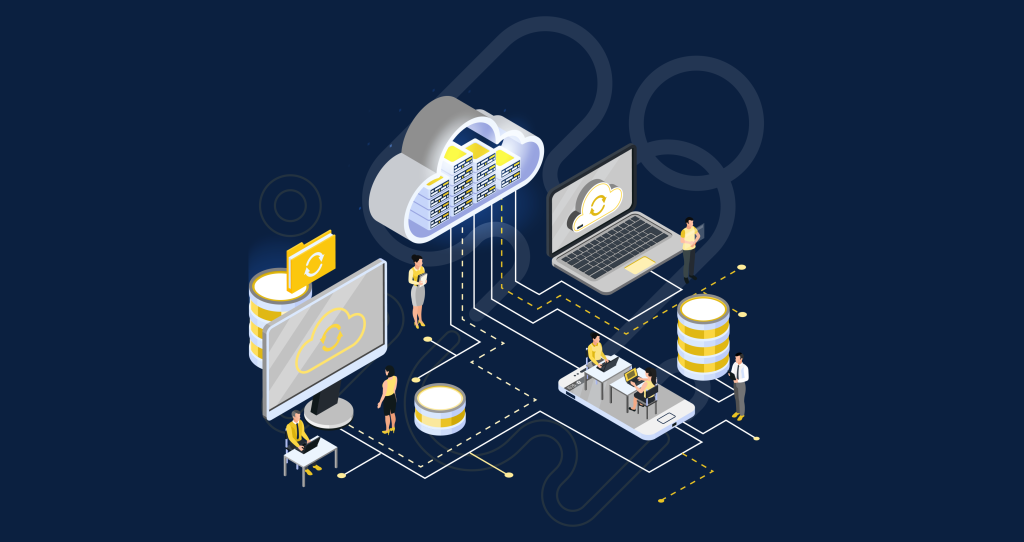Are you a startup founder, serial entrepreneur, or investor thinking of creating a mobile application?
If yes, a question that’ll definitely be paramount in your mind is “how much does mobile app development cost?”
The cost of developing a mobile application ranges from SEK150,000 to SEK2,400,000 for most applications.
However, your exact price is determined by the type, complexity, business model, and development team.
The MVP for a typical application of average complexity at SEK300/hour is:
- Android–SEK500,000
- iOS–SEK600,000 and
- Cross-platform–SEK800,000.
When it comes to creating an application, you’ll get what you pay for.
Pay beneath a certain threshold, and you’re undoubtedly hiring a low-quality team.
On the other hand, hire cost-effectively, and you’ll have a perfect price-quality ratio.
This article will discuss the intricacies and nitty-gritty of pricing a mobile application.
Points we’ll discuss in this article entail:
- App development costs
- Factors that impact the cost of building an application
- App development costs that are easily overlooked
- App development cost by example.
Let’s delve right into the crux of the article:
Looking for the best mobile app development agency to bring your ideas to life?
Sign up for a FREE 30-minute consultation with experts at Intelivita now!
How Much Does it Cost to Develop a Mobile Application In Sweden?
The cost of developing a minimum viable product for a mobile app in Sweden ranges between SEK150,000 ($15,000) and SEK2,400,000 ($230,000).
However, the exact amount you’ll pay may slightly differ with:
- The product complexity
- The host operating system
- The type of application
- The development team involved
- The location of the development team.
These factors can affect mobile application development by as much as 100%.
Thus, it’s imperative to consider what they entail and how to influence those factors to reduce development costs.
Let’s help you understand their intricacies:
Mobile App Development Cost Defined by Product Complexity
The complexity of a mobile application refers to the number of features, functionalities, components, and interactions in the product’s codebase.
You may also describe complexity as the level of difficulty a coder faces in creating a mobile application.
For example, a typical fintech mobile application is more complex than a single-page to-do list app due to the number of functionalities and features the latter has.
However, that a mobile app has a single purpose doesn’t entirely imply that it’s not complex. Some of them are more complex than most multi-purpose apps. Some examples are:
- Instagram: Albeit a uni-purpose image and video social media product, in its backend are highly complex algorithms that track the number of metrics to sort and determine which ad and image to display to users.
- Spotify: This is a single-purpose platform with highly complex functionalities. One such is its highly sophisticated transmission protocol that powers its offline music streaming mode.
And as you might have imagined, the more complex a solution is, the greater the time needed to develop it fully. This, in turn, affects cost.
For proper understanding, we’ll break down cost into three types:
- Basic app
- Average app
- Complex app
Let’s help you with a spreadsheet detailing the estimated cost per complexity:
| App Complexity | Average Costs | Development Timeframe | Examples |
| Basic | $15,000 to $25,000 | 12-24 weeks | Mindoo |
| Average | $30,000 to $50,000 | 24-36 weeks | Form Assist, Sephora |
| Complex | Starts from $700,000 | Over 36 weeks | SnapChat |
Mobile App Development Price Defined by Operating System
The type of mobile application you’re developing is another factor to consider.
Some mobile apps are generally more difficult to create than others.
Take native apps for example, the requirement for creating one for an iOS platform differs from an Android application.
Likewise, cross-platform apps (applications that can work on both iOS and Android OS) differ in cost from Native apps.
Here’s a table detailing the price estimate per app type for a solution of average complexity:
| Operating System | $ (Total estimate) |
| iOS | $60,000 |
| Android | $50,000 |
| Cross-Platform | $80,000 |
Both iOS and Android apps are often categorized as native apps, as each only work on a single platform.
Mobile App Development Cost Defined By App Type
The type of app is intrinsically linked to required features, and third-party APIs you’ll need to implement.
Both factors are cost-defining, as they’ll impact development time, and expertise required.
1. Offline Standalone App Cost
These are apps that can run and operate independently without any active internet connection.
You can access data locally, and use their functionalities offline.
These types of apps are installed on a user’s device with all necessary files, resources, and functionalities.
Examples of standalone apps are:
- Offline maps
- Document editors
- Note-taking apps
- Photo editors
- Media players
- Etc.
The estimated cost of creating offline standalone apps is $50,000
2. Apps Requiring Moderate Online Connectivity
Apps that require moderate connectivity rely on internet access for only a few functionalities.
That is, users can still have a great user experience when they turn off the internet connection while using the app.
Take Google Map for example, the direction feature in the app can still work once the destination has been loaded.
Here are some examples of applications in this category:
- Social media apps: Facebook, Instagram, and Twitter require an internet connection to access the latest updates, posts, and notifications. However, once the content is loaded, users can still browse, read, and interact with previously loaded content offline to some extent.
- Ride hailing apps: They require internet connection to book a ride, and track driver’s location. But once the ride starts, you no longer need one.
- Travel apps
- Podcast apps.
- Etc.
Basically, any app that allows you to switch off internet connection, and still enjoy its features for a period fits into this category.
The average cost of creating apps with moderate online connectivity is $80,000.
3. Chatbot apps
Chatbot apps are software applications that utilize artificial intelligence (AI) and natural language processing (NLP) techniques to interact with users in a conversational manner.
The functionality and capabilities of chatbot apps can vary widely depending on their purpose and design.
Common examples of apps in this category are:
- Rose AI Chatbot
- Meena by Google
- Tidio Support Bot
- Kuki AI Companion
- BlenderBot by Facebook.
The estimated chatbot app development cost is $90,000.
4. IoT or wearable applications
Internet of Things and wearable apps are software that synchronizes with devices, and gather information on occurring activities.
These apps use internet, sensors, and wearables to enable data-driven interactions and functionalities.
Examples of IoT devices are:
- Health and fitness devices
- Smart home automation
- Wearable assistive technology
- Smart cities.
The estimate app creation price for wearable applications is around $80,000.
This high cost is mostly due to hardware requirements, and rarity of IoT developers.
5. Messaging Applications
Messaging applications, are software applications that enable users to exchange text messages, multimedia content, and engage in real-time communication over the internet.
These apps provide platforms for individuals or groups to connect, communicate, and share information with each other.
Examples of messaging apps are:
- Facebook Messenger
- Telegram
- Slack.
Creating a messaging application like those above averages around $300,000.
6. Augmented Reality Apps
These are software applications that leverage virtual reality technology to create immersive and interactive user experiences.
They superimpose images on the physical environment; thereby, creating a virtual, and immersive environment for the observer.
Examples of AR solutions are:
- Microsoft HoloLens
- Vuforia Chalk
- Gravity Jack
- 8ninths.
The approximate cost of creating an AR solution is ~ $200,000.
7. Enterprise Mobile App
These are applications synchronized with an enterprise’s network system, for workers to undertake the functions required to run an organization.
Common examples of enterprise solutions are:
- Salesforce
- Jira Mobile
- ServiceNow
- Workday Mobile app.
It costs an average of $500,000 to create a robust enterprise solution.
Mobile App Development Cost Defined by Team Type
Your team type is a huge cost-influencing factor to take note of.
For illustrative purposes, we’ll assume that you’re creating a mobile application with average complexity, Here’s the amount it’ll cost you:
| Team type | Price |
|---|---|
| Internal team (US, UK) | $400,000 |
| Software Development Agency (Intelivita) | $50,000 |
| Freelancers | $30,000 |
For the internal team, we’re assuming your workforce consists of a mobile developer, backend developer, UI/UX designer, and QA app tester.
Wondering about what each team type means?
Let’s take a dig into that:
Internal Team
This hiring model entails onboarding full-time developers as an employee of a company.
They receive daily orders from the company’s administrators and regularly interact with team members to ensure that common objectives are attained.
Before opting for this model, you should weigh its pros and cons:
| Pros | Cons |
|---|---|
|
|
Software Development Agency
A software development agency is a company that develops, maintains, and provides other services related to websites and mobile applications.
These app and web development agencies have an on-demand network of highly-skilled professionals. They are a go-to option for startups in need of a cost-effective means of outsourcing development for better profitability.

You can either partner with a local development company or an offshore agency. By local development company, we mean partnering with an agency situated in your home country.
For improved cost-effectiveness or to access a larger talent pool, then you may partner with an offshore development agency with a verifiable portfolio.
Pros and cons of partnering with a software development agency:
| Pros | Cons |
|---|---|
|
|
Freelancers
These are programmers working independently and handling tasks on a per-project basis.
Most freelance programmers know multitudes of frontend and backend stacks. Thus, they often handle full-stack roles and seldom work independently on projects.
Here are some merits and demerits of handling this project:
| Pros | Cons |
|---|---|
|
|
Note: The costs mentioned above are not finite, as there are some hidden fees to consider when preparing your budget.
Mobile App Development Costs by Region
Country where a software development agency operates from is a huge cost influencing factor.
In the US for example, the average cost of hiring a developer is 3X – 4X more expensive than the mobile application development cost in India.
Here’s a table depicting how prices differ per region:
| Region | Price (Hourly) |
| USA | $100 |
| Western Europe | $80 |
| Australia | $90 |
| Eastern Europe | $50 |
| India and Southeast Asia | $25 |
Now that you know how mobile app development cost differs from country to country, let’s discuss the stages that accumulate into the total price tag.
Step-by-Step Mobile App Development Process to Get Started: Stage By Stage Cost Analysis
For proper understanding, we’ll app development cost breakdown per step:
1. Discovery Phase (20% of Mobile App Development Cost)
The discovery phase of mobile application development is where team members research the viability of the idea, technical requirements, business needs, and talent required.
This phase helps to serve as the groundwork for other development activities and has multitudes of parts, which entail:
| Aspects | Description |
|---|---|
| Market analysis | Market analysis helps you research market demand, the size of the market, technological trends in your niche, and the number of competitors.
This aspect will be conducted by a business analyst and may require assistance from a team of data analysts, data scientists, and tech leads. |
| Competitor analysis | Competitor analysis is the process of assessing the weaknesses and strengths of prospective competitors.
This way, you can tailor your business model for better advantage amidst rivals. |
| Budgeting | Budgeting helps you identify the total app development cost beforehand.
This aspect requires input from the tech leads, UI/UX designers, business analysts, project managers, and idea owners. |
2. UI/UX Design Phase (20% of Total Mobile App Development Cost)
The UI/UX design phase is where a designer creates a pictorial view of the app idea, per co-founder expectations, and results from the discovery phase.
Depending on the complexity of the design, the number of screens, and the UX map out, the timeframe for completion usually ranges around 20-140 design hours.
At the end of this phase, you should have the:
- Wireframe
- Interactive prototype
- Mockups.
This phase is the most fluid, as it requires regular feedback from the team and startup founders
3. Coding Phase (50% of Total Mobile App Development Cost)
This phase, also called the core development phase, is where backend and mobile developers write codes for every feature, functionality, button, and icon that should be in the application.
The activities here can be divided into two:
- Backend Development
- Frontend Development.
| Aspects in the Coding Phase | Description |
|---|---|
| Back-end development | The backend development phase involves creating server-side features, using tech stacks like Java, Node.JS, Laravel, GoLang, Python, Next.JS, etc.,
Features created here are not visible to users but are key to the core function of the application. See them as the brain box of the overall system. The backend is responsible for 30% of the overall app development cost. Or 60% of the cost expended in this phase. |
| Front-end Development | Front-end DevelopmentThe front-end development phase entails the creation of user-sider features and functionalities with tech stacks like Swift, React Native, etc.
The features here are those users will interact with, and they determine the aesthetics of the application. Frontend is responsible for 20% of the overall app development cost. Or 40% of development cost expended in this phase. |
At the end of these two phases, the deliverable should be a fully functional mobile application.
4. App Launch (10% of Total Application Development Cost)
There’s no point in creating a mobile application if you wouldn’t launch it; isn’t it?
Knowing how to launch an app is as important as knowing its creation process. Beyond facilitating installation, it improves performance and user loyalty.
This launch process comes with its own cost, as you’ll need to pay requisite fees on mobile app stores like Apple Store, and Google PlayStore.
The launch process requires that you have top-notch App Store Optimization techniques. For example, you can test a range of animations, videos, descriptions, and images to see what works best.
Precisely Estimating Your Project Cost
Interested in a precise figure of how much it costs to create an application for your business?
You can only know that by preparing a mobile app development cost breakdown with individual tasks and project milestones.
To self-estimate your cost, do the following:
- Prepare a list of tasks, developers, and resources needed.
- Choose an estimation method,
- Track budgets.
Let’s educate you further on this:
Prepare a List of Tasks, Developers, and Resources Needed
Break down the entire project into smaller, and manageable tasks, then assign each task to your team member based on their expertise.
The CTO estimates the duration for completing each task, and the hourly rate of your team.
Ensure you have enough skilled people and resources needed to complete the tasks.
That is, identify the total number of experts you need, as determined by the complexity of your project.
Choose an Estimation Method and Make Your Calculations
There are three methods to calculate the cost of creating your mobile application.
Ballpark
This method entails making a rough estimate based on speculation and previous experience.
This doesn’t give precise cost estimation as prices often increase per inflation, and the intricacy of every software differs.
It’s best to contact an experienced software development agency for a near-precise ballpark estimate.
Parameter-based
Parameter estimation entails making calculations based on historical data.
With this method, you take previously calculated duration for completing each task, then multiply it by the hourly rate of your development team.
This method requires a lengthy timeline.
However, it delivers a near-accurate estimate.
Three-point
This method outperforms others as they incorporate potential risks.
Basically, you’ll ask your software development partner to provide three cost estimates: realistic, pessimistic, and optimistic projections.
The pessimistic value will consider all possible risks and uncertainties for multiple scenarios.
Optimistic value assumes that everything goes smoothly without any hitch; but realistic scenario identifies only considers feasible risks.
Track Budgets
Upon project commencement, ensure you don’t spend out of your app development budget.
You may get accounting software to track your expenses and save data for future projects.
In an instance where you hire a software development agency, your project manager will track expenses.
How to Keep App Project Development Cost Low
How do you build a mobile application for a cheap price without impacting the quality of deliverables?
1. Discovery Phase
Carry out technical and business research before commencing design and development.
Identify the technologies and platforms that can provide you with cost-efficient delivery.
Also, know your competitors and target audience to increase your chances of success and prevent you from making costly errors.
2. Use the Right Vendor
Ensure to choose a vendor with track record of quality delivery.
Visit their homepage, check the case studies on their website, and view their portfolio of past projects.
Most software development agencies will also provide you with a free cost estimate.
3. Offshore Outsourcing
Outsource to companies with cheap development rates.
For example, India-based software development agencies are 3x-4x cheaper than US, UK, Canadian, and Australia-based ones.
4. Create MVP Before Scaling
First create the core-functional features and launch the basic version of the app.
It helps you know the feasibility of your project before spending more money on adding extra features.
5. Simple Design
Design doesn’t have to be complicated. Especially for MVP and minimalist projects.
Upon successful launch, you can then scale and use a more complex design.
6. Regularly Evaluate your Cost
Evaluating your app development cost help get rid of excess budget.
For this, contact a professional to evaluate your budget, and find unnecessary expenses and over-bloated fees.
7. Plan your Scope
Plan the scope of your application and adhere to it.
You may increase upon further iterations, but stay with a minimalist plan at the beginning.
Cost of Publishing an App on the Apple App Store and Google Play Store
Publishing your app on the Apple App Store and Google Play Store is not free.
You need to pay certain fees. Let’s delve into that.
App Publishing Fee 1: Developer Account
Both Apple App Store and Google Play Store mandates developers to have an account on the platform before they can publish.
Google Play Store requires a one-time registration fee, while Apple requires an annual fee for its App Store.
App Publishing Fee 2: Subscriptions and In-App Purchases
Subscriptions and in-app purchases on Google Play Store and App Store can generate revenue, however, you’ll be asked to pay a commission fee for each transaction.
Consider these expenses while calculating the profitability of your application.
Below are fees charges by Google Play Store and Apple’s App Store.
| Item | Apple App Store | Google Play Store |
|---|---|---|
| Developer Account | 99$/annum | 25$; one-time fee |
| Subscriptions and In-app Purchases | 30% of revenues made over $1M.
You’ll pay 15% if:
|
15% of revenues made up to $1 million.
30% will be charged once the expense reaches $ 1 million for the year. |
How to Choose an App Development Company
The most determining decision to successfully launch an app in 2024 is the quality of the app development company you choose.
Here are things to consider when choosing a software creation agency:
Factor 1: Experience
View the agency’s portfolio to see the complexity of apps they’ve developed.
Ensure their portfolio has apps in your niche.
Check out their blogs to ascertain that they understand the unique requirements and challenges.
Factor 2: Expertise
Ask that the agency has experience in the specific technology stack you need to create your solution.
For example, this is the tech stack that Intelivita uses to create mobile apps:
Cloud Architecture: Azure, AWS, and Google Cloud
Programming languages: Python, Objective-C (iOS), Swift, Kotlin (Android), Java, Flutter JS, and React Native.
Intelivta uses more than these, but they’re the company’s primary tech stack.
Factor 3: Cooperation Model
Experienced vendors offer you a range of cooperation models.
In Intelivita for example, we offer you:
- Dedicated Team: This option helps you outsource desired talent to work in-hand with an in-house team.
We offer monthly schedules. - Remote Development: This is a materials and time contract.
The development team will help you create your solution to taste.
Contact our team if you’re confused about which cooperation model best suits you.
Factor 4: Communication
Top-notch communication is sacrosanct to successfully create a mobile application.
Consider the company’s availability, updates, progress reports, and honesty on challenges faced.
Factor 5: Security
Ensure chosen vendor has expertise in creating secure applications.
Test their knowledge of encryption, communication protocols, and data storage.
Also, make sure they understand compliance with HIPAA, PCI-DSS, and GDPR regulations.
Factor 6: Support and Maintenance
Request for information about the agency’s post-development support and maintenance services for your app to remain stable and relevant.
Factor 7: Price
Albeit price is not the most important factor, you should also consider it.
Avoid companies with ridiculously low amounts, as they’ll only cut corners with costs.
Opt for vendors with a fair budget, that aligns with the value provided.
Now that you know the app development cost stages, let’s consider some examples for better understanding:
Cost of App Development By Examples
We’ll use three diverse examples as case studies to help you understand the cost of building a mobile application.
Example 1: How Much Does it Cost to Create a Fintech App Like Revolut?
Revolut is a Neobank that offers services like peer-to-peer money transfer, fee-free currency exchange, and other regular banking features.
Primary features in the Revolut App:
- Peer-to-peer money transfer
- International rate conversion
- Easy registration
- Secure login
- Profile personalization
- Protected biometric system.
According to Business of Apps, the platform currently enjoys over 1.1 million daily users. And with a valuation of over $33 billion, it’s a no-brainer that multiple startups would want to create a similar product.
The cost of building a Neobank like Revolut starts at $40,000. The exact cost will depend on the features and functionalities inherent in the solution.
Example 2: How Much Does it Cost to Create an App Like Uber?
Uber is a ride-hailing app that connects its app users with the nearest available rider. It’s the largest hailing service and has over 93 million monthly users.
Get a precise and accurate cost estimate for your custom mobile app with advanced features.

Primary features of Uber App:
- Real-time location tracking
- Card linking
- Driver review
- In-app location.
The cost of creating the MVP of a ride-hailing solution from us is about $40,000. The expected timeframe for completing the project is 6-8 months.
Example 3: How Much Does It Cost to Develop an App like Instagram?
Instagram is one of the most visited social media platforms, as it currently boasts 1.4 billion users as of July 2022. Little wonder why most startups hoping to leap into the social media space consider it a noteworthy model.
Core features of the Instagram app are:
- Instagram reels
- QR codes
- Boomerangs
- Instagram stories
- DMs
- Etc.
Instagram-like app development cost starts at $30,000.
Example 4: How Much Does It Cost to Build an App Like Tinder
Tinder is a dating solution with over 75 million users, and is popular in over 197 countries. To attain optimum usability, the platform has a variety of languages that is auto-selected per user location.
Features to build in a dating app are:
- In-app messaging
- Profile customization
- Settings
- Swipe-to-match feature
- Real-time location tracking.
The ideal app development budget for Tinder is $30,000.
Example 5: Cost of Developing an App like Netflix
Netflix is a subscription-based streaming service that lets users watch TV, videos, and make downloads. Netflix currently has over 223 million active subscribers with a growth rate of 22.7%.
Core features in the Netflix app are:
- Library
- In-app payment
- Video download feature
- In-app video streaming
- Settings
- Timeline customization.
The cost of developing an app like Netflix is around $35,000.
Now that you have a succinct idea of app development cost, let’s consider some factors that might alter prices:
Top Factors That Impact Your Mobile App Development Cost
Mobile app developer costs depend on a number of important factors. Understanding these factors helps you to make the most price-efficient decision.
In addition, it helps you create a reasonable budget.
As such, let’s talk about some important factors in how much it costs to develop mobile software applications for companies
Factor 1: Business Logic of the App
In mobile app development, business logic or domain logic refers to the core function of the app, its business model, and the outcomes users get from the application.
The app’s business logic provides direction to the following attributes:
- The overall size of the mobile application
- The ideal tech stack for developing the solution
- The size of the development team
- Timeframe for completing the application
- QA validation process required
- The dependables needed.
Generally, mobile application development with more complex business logic is more expensive. This is due to its complex architecture and multiple functionalities that the programmer needs to implement.
Factor 2: Technology Architecture
Technology architecture in mobile app development entails the aggregation of logical components that are required to create a functional application.
The software architecture is a blueprint that programmers will follow to create a deliverable.
The technology architecture attributes that impact costs are:
- The tech stacks
- Scalability
- Multi-tenancy.
Since tech architecture is a workflow mapping of how the solution operates, it’s only logical that the longer the workflow, the more expensive the mobile application.
A good technology architecture has its root in the app discovery phase. This phase is a step whereby the development team gathers requisite information about the target audience, solution’s objectives, founder’s expectations, and competitors.
An ideal discovery phase will carry a budget of about 10% of the complete development budget–this is partly due to its research-intensive nature, and it involves input from every team member.
The result from the discovery phase allows the CTO or any tech lead in charge to map out the technology architecture of the solution appropriately.
Factor 3: UI/UX Design
The UI/UX design is a prototype or mock-up detailing the look and user experience end users will derive from using a solution.
It also provides insight to coders on what features and functionalities they’ll need to create within the mobile application for it to achieve the founder’s ultimate objective.
UI/UX attributes that influence app development cost:
- The number of screens needed to complete a process,
- The type of user interface (Native UI’s cost more than hybrid interfaces),
- The number of animations in the design.
The higher the number of screens and animations in the design, the costlier the app developmental fee.
Factor 4: Core Features of the Mobile Application
The core features of a mobile solution are those necessary for it to perform its primary features. Solutions with complex features mean app developers.
Here, we’ll consider some key elements needed for each mobile app niche:
| Niche | Key Features |
|---|---|
| Fintech (Banking) | Peer-to-peer transfer, connection with external service providers, account balance, payment processor, and transaction history. |
| Edtech | In-app video chat, in-app messaging feature, subject categorization, and feedback sections. |
| Social Media | Messaging system, real-time notifications, content sharing element, and profile personalization. |
| HealthTech | Appointment scheduler, video-conferencing, in-app reminders and notifications, symptom checker, healthcare tips. |
As seen in the table above, the product niche highly influences the cost of software development.
Take fintech app development for example; there are lots of key features it must have to function appropriately, with each of them being highly complex.
Also, the features are sensitive, as a single error can lead to a loss of funds. This makes the cost of creating a fintech application naturally higher than in other niches.
Factor 5: Infrastructure Services
Infrastructure services are the underlying technologies and resources that support the development and deployment of applications, such as APIs, databases, and cloud hosting.
-
Hosting Cost
Hosting an application requires resources such as servers, storage, and bandwidth.
Infrastructure services like cloud hosting providers charge for the resources consumed, and costs can vary based on the amount of traffic, storage needs, and other factors.
| Hosting Provider | Type of Hosting | Monthly Cost | Description |
|---|---|---|---|
| Amazon Web Services | EC2 Instance | $100 | Hosting for web application and database |
| Google Cloud Platform | App Engine | $50 | Hosting for mobile backend |
| Microsoft Azure | Virtual Machine | $75 | Hosting for web and machine learning models |
| DigitalOcean | Droplet | $20 | Hosting for small-scale web application |
-
Data Storage Costs Table:
Applications typically require databases to store user data, content, and other information.
Infrastructure services charge for the amount of data stored and the level of data access and retrieval needed.
| Database Provider | Type of Database | Monthly Cost | Description |
|---|---|---|---|
| Amazon Web Services | Relational Database Service | $100 | Database for web application |
| MongoDB Atlas | Document Database | $30 | Database for mobile backend |
| Google Cloud Platform | Bigtable | $100 | Database for big data analysis |
| Firebase | Realtime Database | $20 | Database for small-scale mobile app |
-
API Fees
Many applications rely on third-party APIs to access data or functionality that they do not provide natively.
These APIs may charge for usage, based on the number of API calls or other factors.
| API Provider | Type of API | Usage-Based Cost | Description |
|---|---|---|---|
| Google Maps | Mapping API | $0.50 per 1,000 requests | Provides mapping functionality for web and mobile apps |
| Stripe | Payment API | 2.9% + $0.30 per transaction | Enables online payments for web and mobile apps |
| SendGrid | Email API | $9.95 per month | Sends transactional emails for web and mobile apps |
| Twilio | SMS API | $0.0075 per message | Sends SMS messages for web and mobile apps |
-
Development Environment
Developers need access to development tools and platforms to build and test applications.
Infrastructure services that provide these tools may charge for usage.
| Development Tool | Type of Tool | Monthly Cost | Description |
|---|---|---|---|
| GitHub | Code Repository | $7 per user | Hosts code repositories for web and mobile apps |
| JetBrains | IDE | $25 per month | Provides code editing tools for web and mobile development |
| CircleCI | Continuous Integration | $30 per month | Automates build and testing processes for web and mobile apps |
| Docker | Containerization | $10 per month | Enables development and testing in isolated environments |
-
Scalability and Performance
As an application grows in popularity, it may require more resources to handle increasing traffic and demand.
Infrastructure services that support scalability and high performance may charge more for these features.
| Infrastructure Service | Type of Service | Cost | Description |
|---|---|---|---|
| Amazon Web Services | Elastic Load Balancing | $0.008 per hour | Distributes incoming traffic to multiple instances of web application |
| Google Cloud Platform | Memorystore | $0.18 per GB-hour | Provides in-memory caching for faster data access |
| Cloudflare | Content Delivery Network | $20 per month | Speeds up delivery of web content to users |
| New Relic | Application Performance Monitoring | $149 per month | Monitors and optimizes web and mobile app performance |
These tables can be customized based on the specific needs and services used in the app development process.
For more exposé on these factors, then read this article.
Native vs. Hybrid Cost of App Development
Applications suited for a specific operating system are regarded as native applications. While those that can work on multiple operating systems are called hybrid apps.
A native application is created using programming languages like Java (for Android app development), Objective-C, or Swift (for iOS app development).
The benefit of this entails a smoother user experience, access to platform-specific features, and better performance.
However, creating native apps can be somewhat expensive as you’ll need two codebases for Android and iOS.
Hybrid apps, on the other hand, are built with web technologies like JavaScript, CSS, and HTML and then wrapped in a native container to allow them to run on multiple platforms.
However, hybrid applications may have limitations in terms of user experience and performance, especially for complex solutions.
All app development companies charge more for Hybrid solutions that Native ones.
Below is a cost to develop solutions for different operating systems.
- Hybrid app cost: $80,000
- Android app cost: $50,000
- iOS app cost: $60,000
What’s more? There are some application creation costs to take into account.
Hidden App Development Cost
By hidden costs, we mean expenses that are elusive to founders at the onset of product development.
They’re usually unnoticed till the mobile app development process.
Albeit hidden, they’re salient to creating a robust mobile framework, making it remain functional, and helping it reach its target users.
The two most common hidden costs in mobile app development are:
- Marketing costs
- Maintenance costs.
These costs should be estimated within the mobile app project research phase and added to the total budget.
Let’s provide you with more information on what each entails:
Hidden Cost 1: App Maintenance Cost
The app maintenance cost is the funds needed to pay recurrent technical subscription fees and keep the requisite skills for troubleshooting software errors.
Your yearly software maintenance cost should be about 25% of your overall app development price.
That is, if it costs you $200,000 to create your mobile application, set aside about $50,000 as the cost of maintaining your solution for a year.
Your maintenance budget will likely be expended on the following:
| Budget Item | Description |
|---|---|
| Monitoring analytics |
|
| App integration | Most apps are regularly updated every 1-4 months.
Here are some possible updates that’ll be made:
|
Note: Maintenance cost may increase significantly if you’re undertaking a major update. In the case of a total revamp, or code migration, you may pay as high as 100% of the total development cost–depending on the intricacy of the maintenance.
Another hidden cost to consider is the product’s marketing cost. Let’s take a dig into that right away:
Hidden Cost 2: Marketing Cost
Marketing cost is a budget set aside for advertising your mobile application to your target audience. This is an important step in ensuring the app’s objectives are met.
The ideal annual app marketing cost for a mobile application should range between your overall development costs.
If your app development cost is $50,000, then have a yearly marketing budget of about $100,000 – $150,000.
The high financial marketing demand is due to the following aspects:
| Marketing Aspects | Description |
|---|---|
| SEO |
Search engine optimization helps to improve the quantity and quality of web and mobile apps from search engineering. It helps platforms gain unpaid traffic rather than paid or direct traffic. |
| Email marketing |
According to HubSpot, 81% of B2B marketers say email newsletters are the most effective form of content marketing. Email marketing is a strategy to help introduce customers to discounts, products, and other services by communicating your offerings via electronic mail. |
| Product hunt launches | This marketing aspect entails launching your products on platforms primarily for tech-loving audiences. |
| Social media marketing |
According to nealschaffer, 93% of marketers worldwide use social media for advertisement. This aspect of marketing aims to use social media as a primary means of driving application traffic, interacting with users, and improving retention. |
Now that you have a detailed knowledge of the price of creating a mobile application.
Interested in Mobile App Development?
Interested in creating a mobile application that aligns with your technical or business requirement?
At Intelivita, we have a robust team of mobile developers that create scalable, secure, and resilient mobile applications.
Through failure-proof project management practices, we’ll ensure that deliverables align with your technical and business needs.
Doubt our capacity to deliver as a mobile app development company, then visit our portfolio, and check through our clutch testimonials.
Get in touch with us by filling out the form on our website and a representative will get in touch soon.
Alternatively, you can send us a mail within work hours for a prompt reply.
Bonus Infographic
Check out the highlights of our detailed guide “App Development Cost” to learn some key points about stages of application creation, the costs of mobile solution building, factors affecting it, and more.

